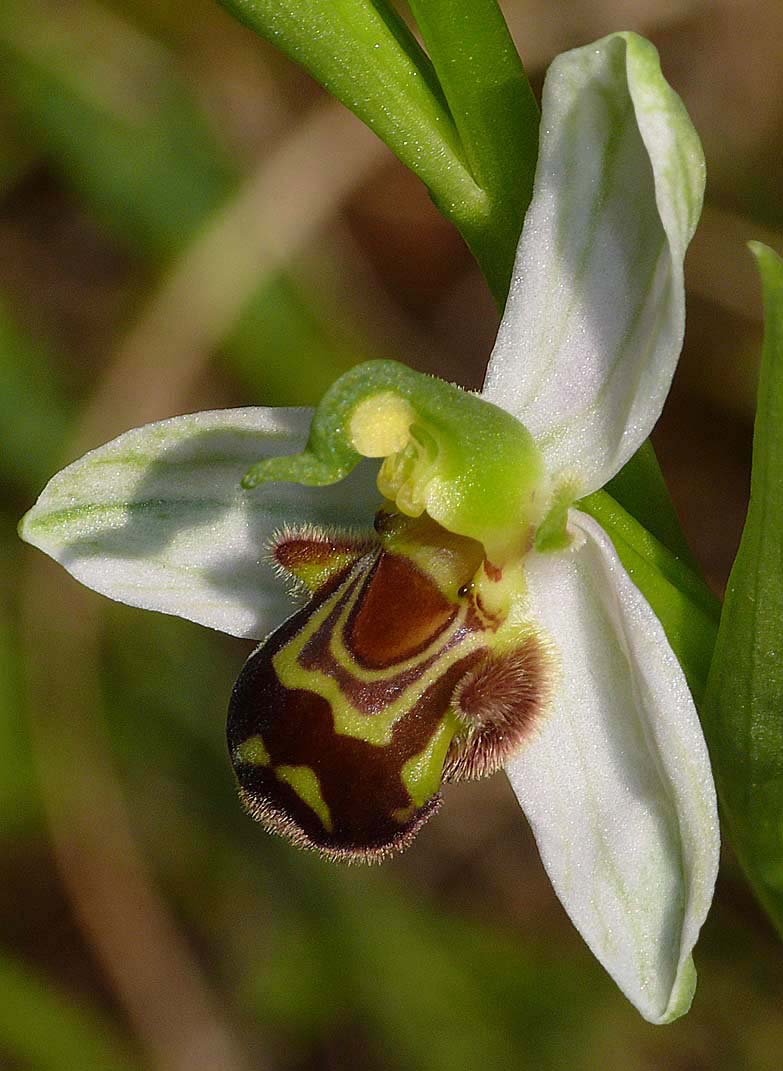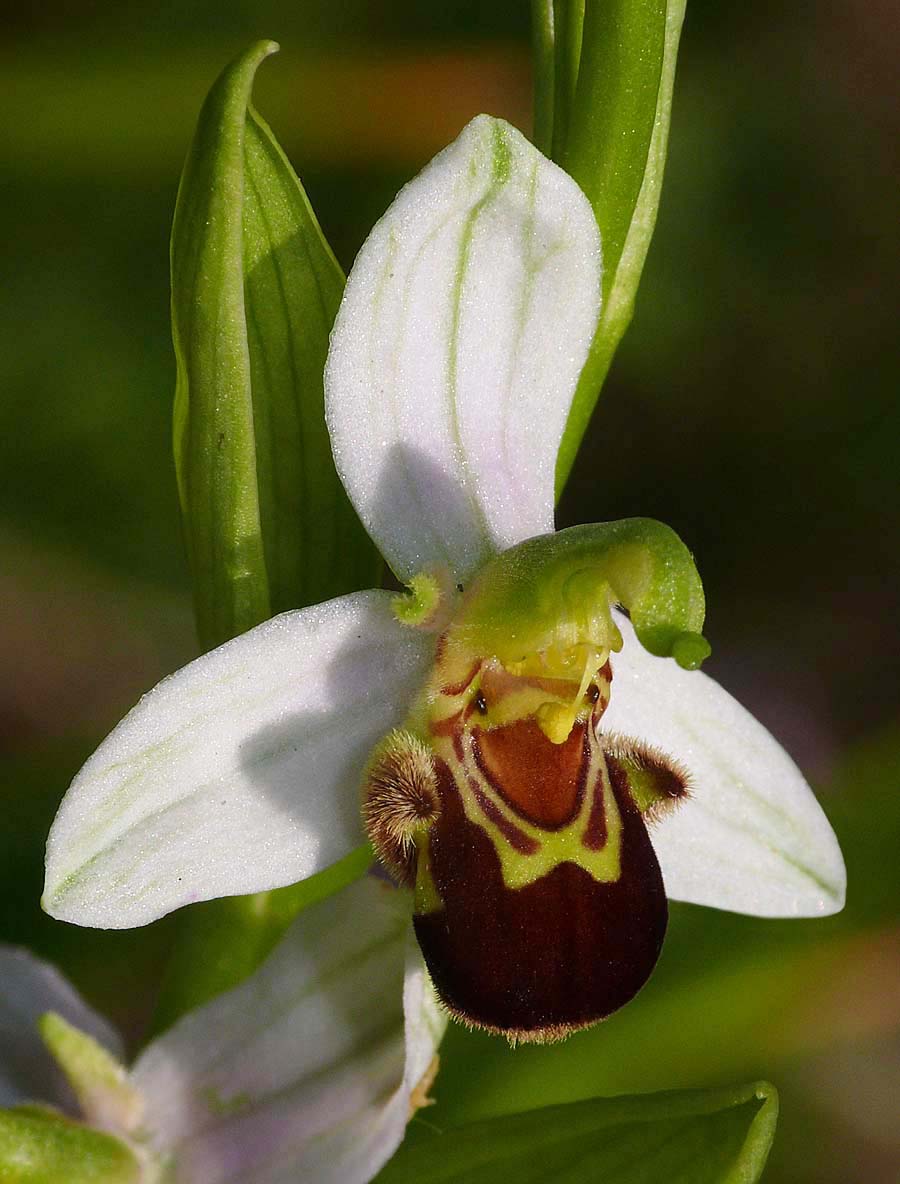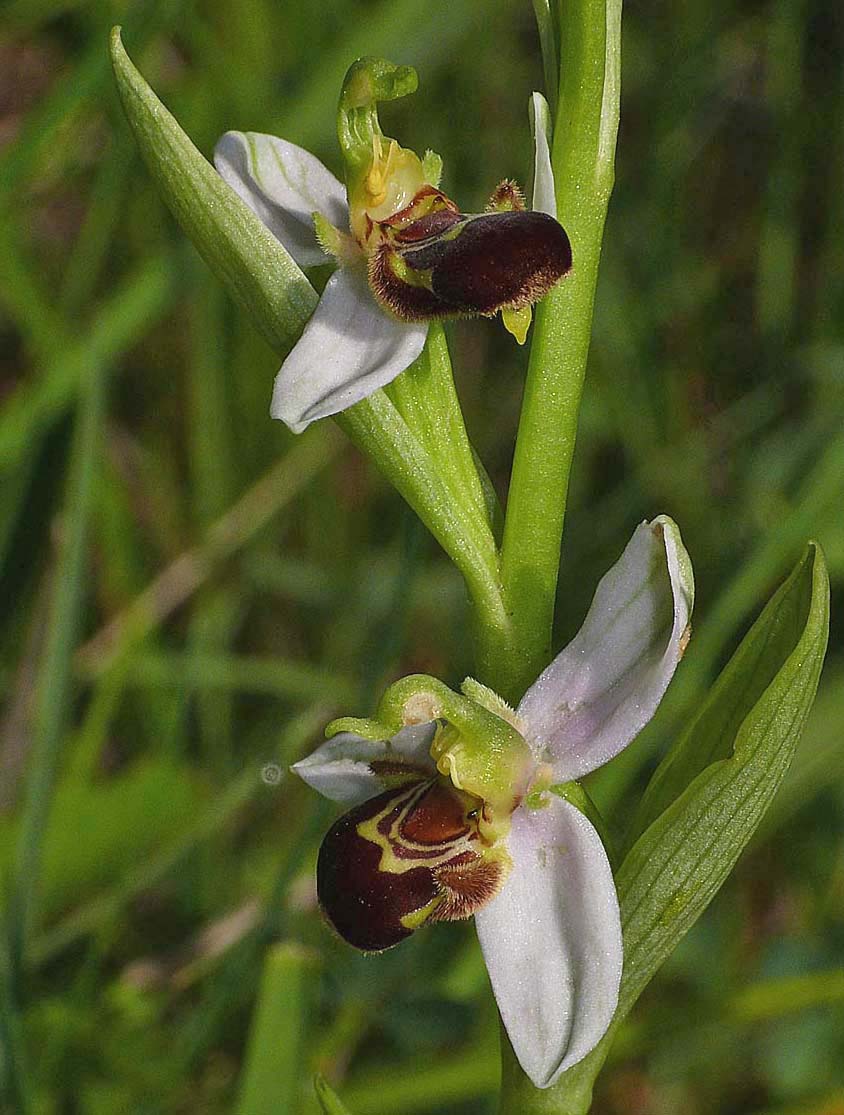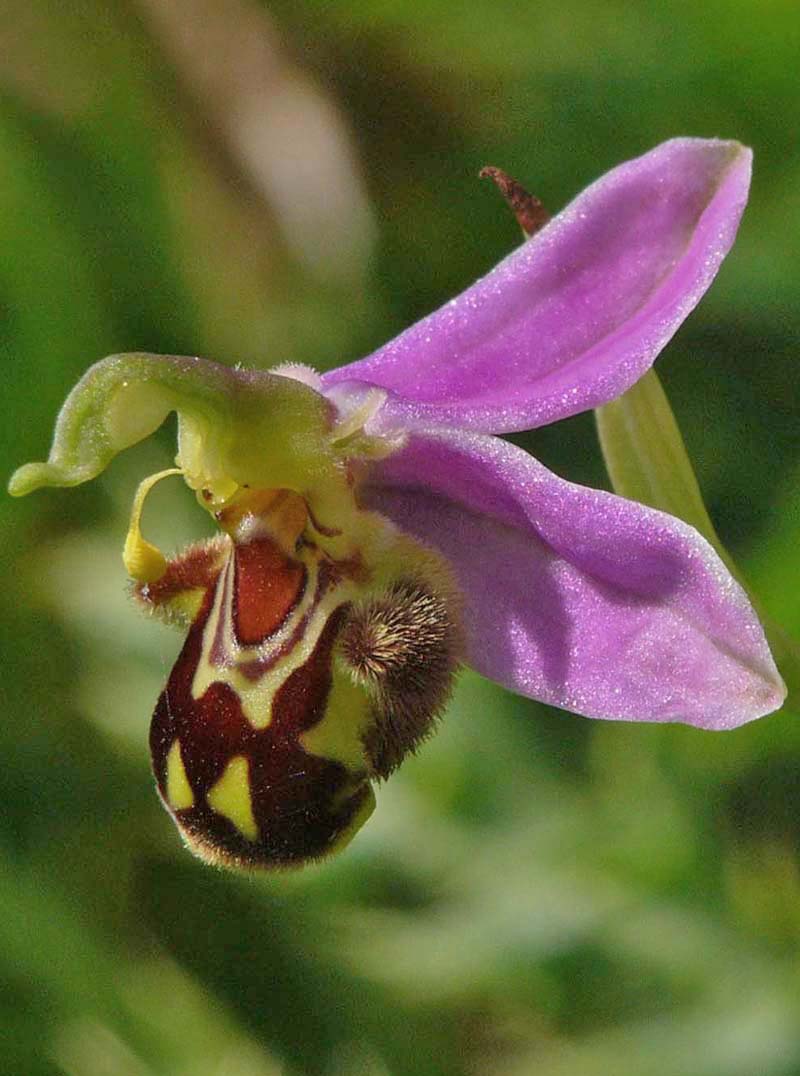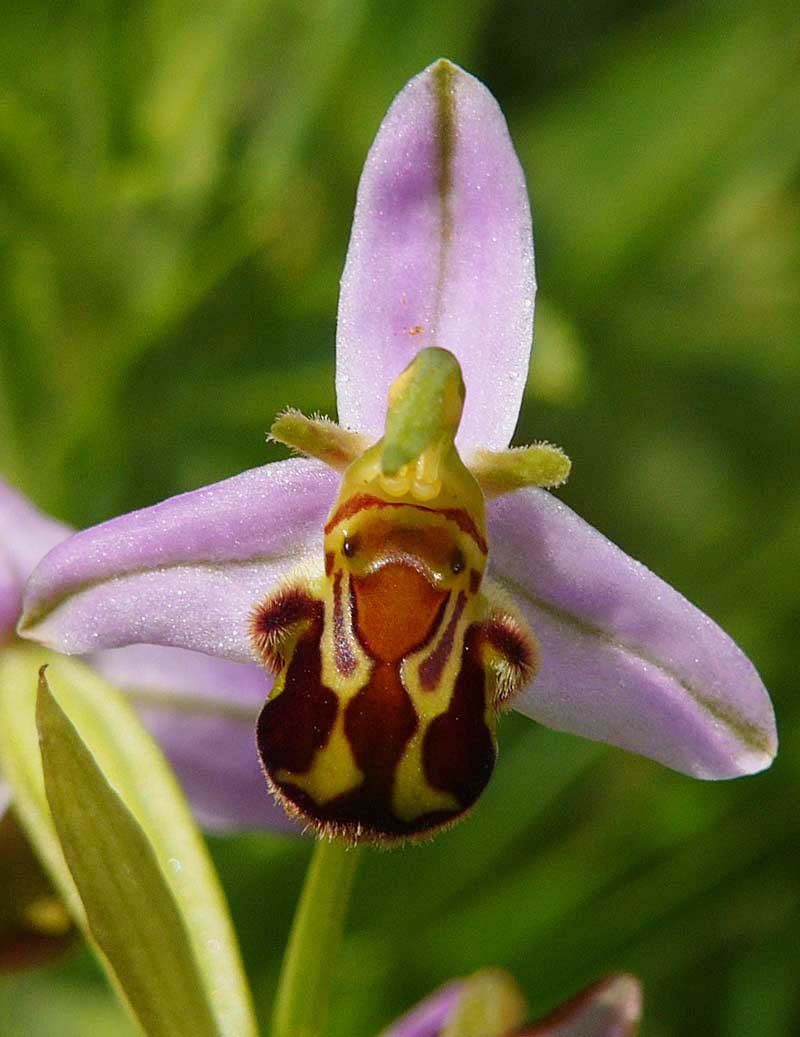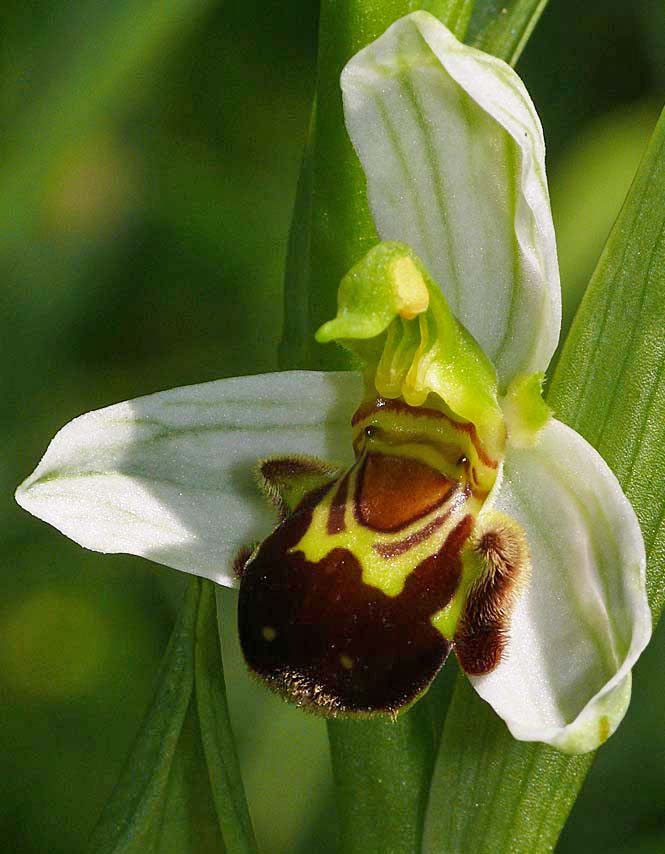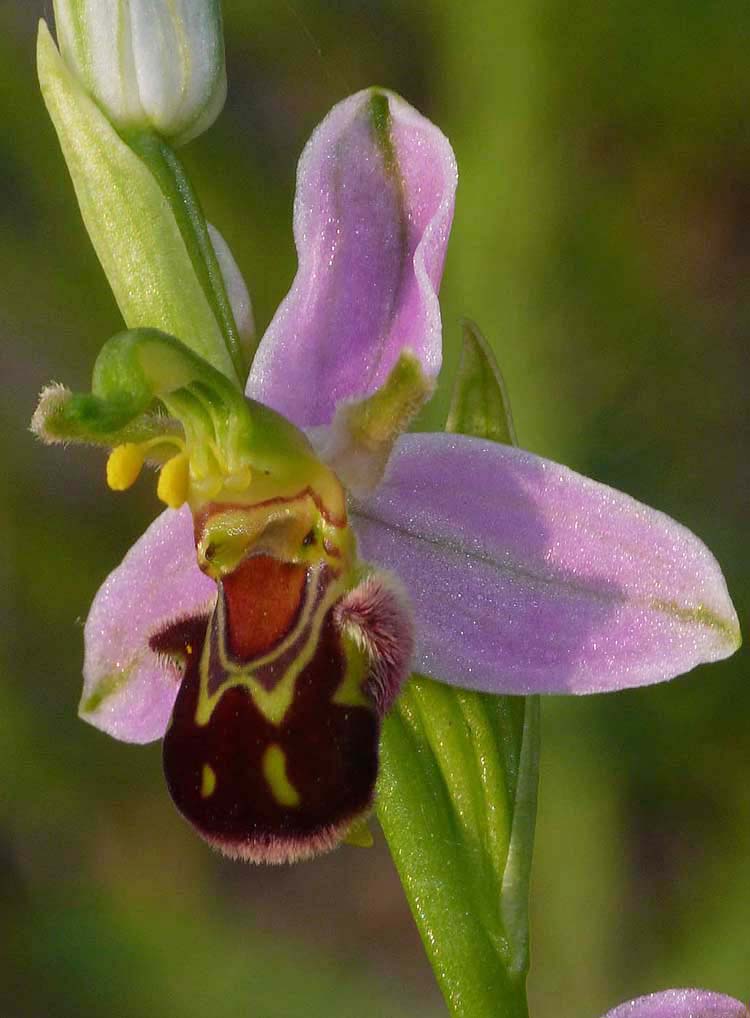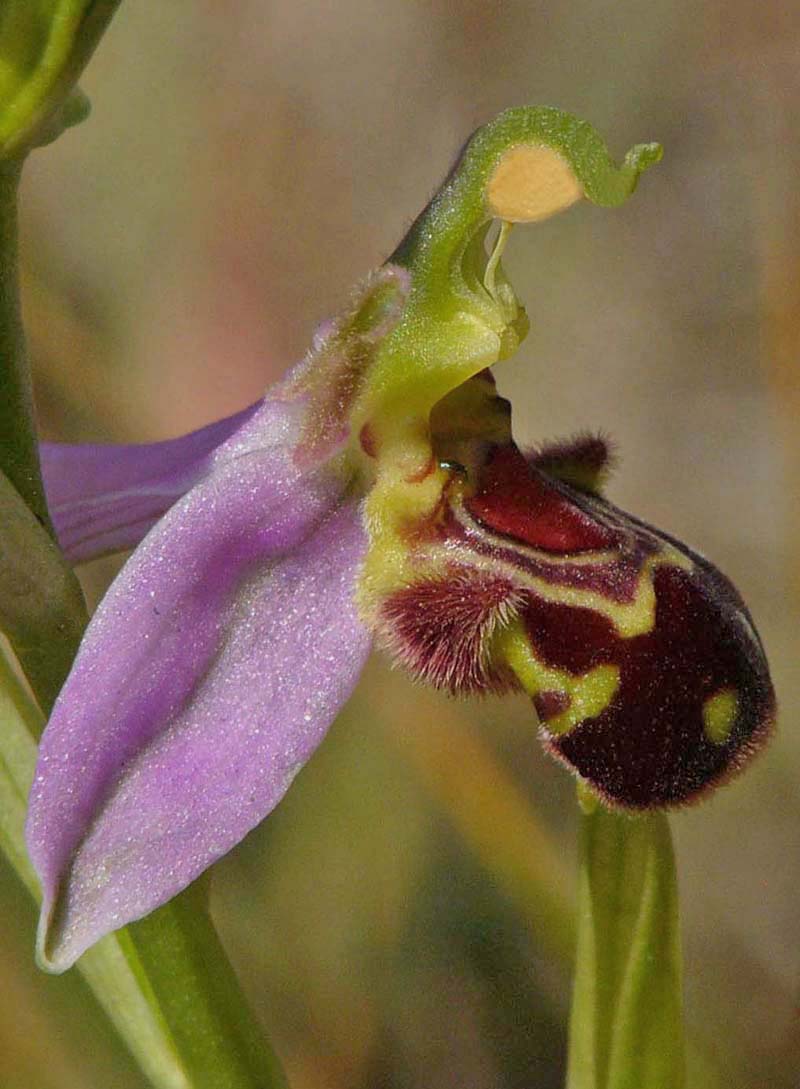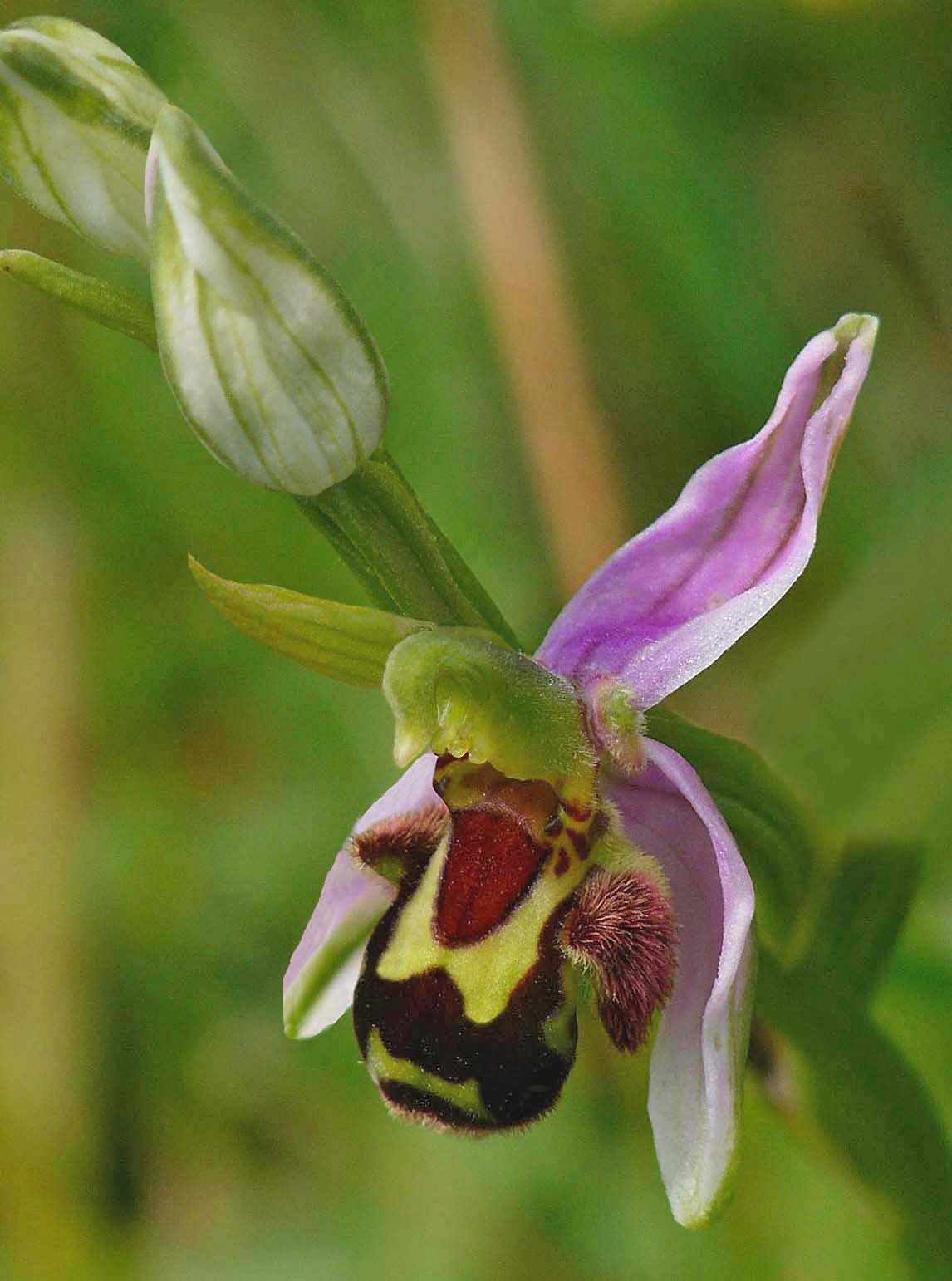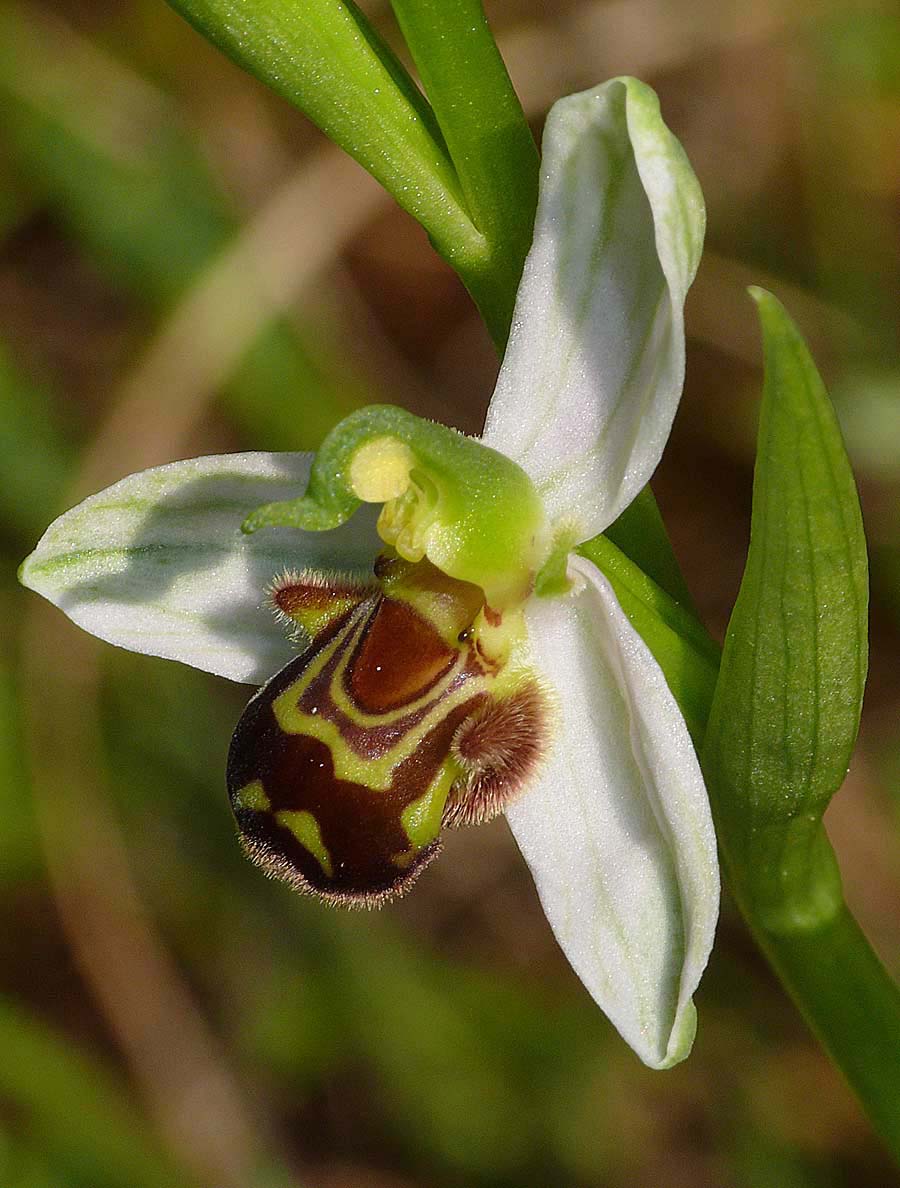O. apifera was
first described by Hudson from England in 1762 and its
name refers to the flowers similarity to a bee. Accordingly
the species has long been commonly known as
the Bee Orchid.
It is a widespread orchid, found across temperate and Mediterranean Europe as far east as the Caucasus. In its favoured locations it can be abundant and choice of habitat wide, ranging from the driest chalk grassland/garrigue to wet, even swampy conditions, preferring full sun positions, though tolerant of even significant shade. Sepal colouration is normally pale pink but white is not uncommon and in the Balkans, it can be dominant, with pink a real rarity. O. apifera is largely self pollinating and this autogamy seems responsible for the frequent appearance of variant plants, some of which, although not of evolutionary significance, occur on a sufficiently regular basis to have acquired formal varietal status.
The number of recognized variants is steadily increasing and
many of them may be encountered in the UK, albeit very exceptionally in
some cases. O. apifera v apifera
may be distinguished from its variants by the short green petals, a lip
that exhibits a complete basal field and uncluttered, symmetrical
yellow marking. Variants apart, O. apifera is unlikely to be
confused with any other species and not least because of its late
flowering period. In temperate parts of its range, including
the UK, it starts flowering at the end of May and is at its best in mid
June, whereas in the Mediterranean it can flower as early as April.
This species is
not a long lived plant but is not (as was once thought)
monocarpic though it can disappear at a site for years only to
resurface when conditions, critically rainfall, have been
more to its liking. The pictures are from the south of England and all white examples, Croatia.
